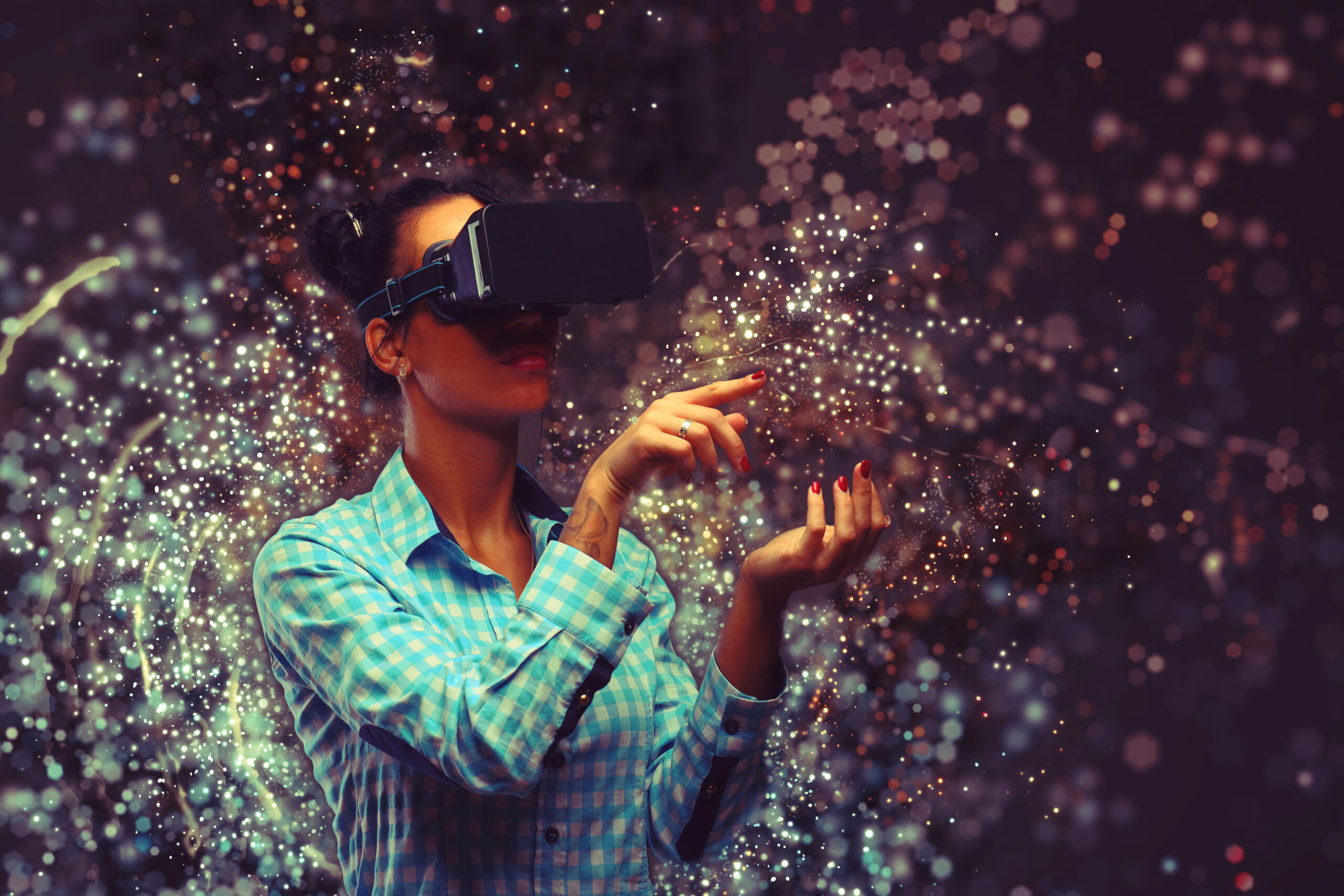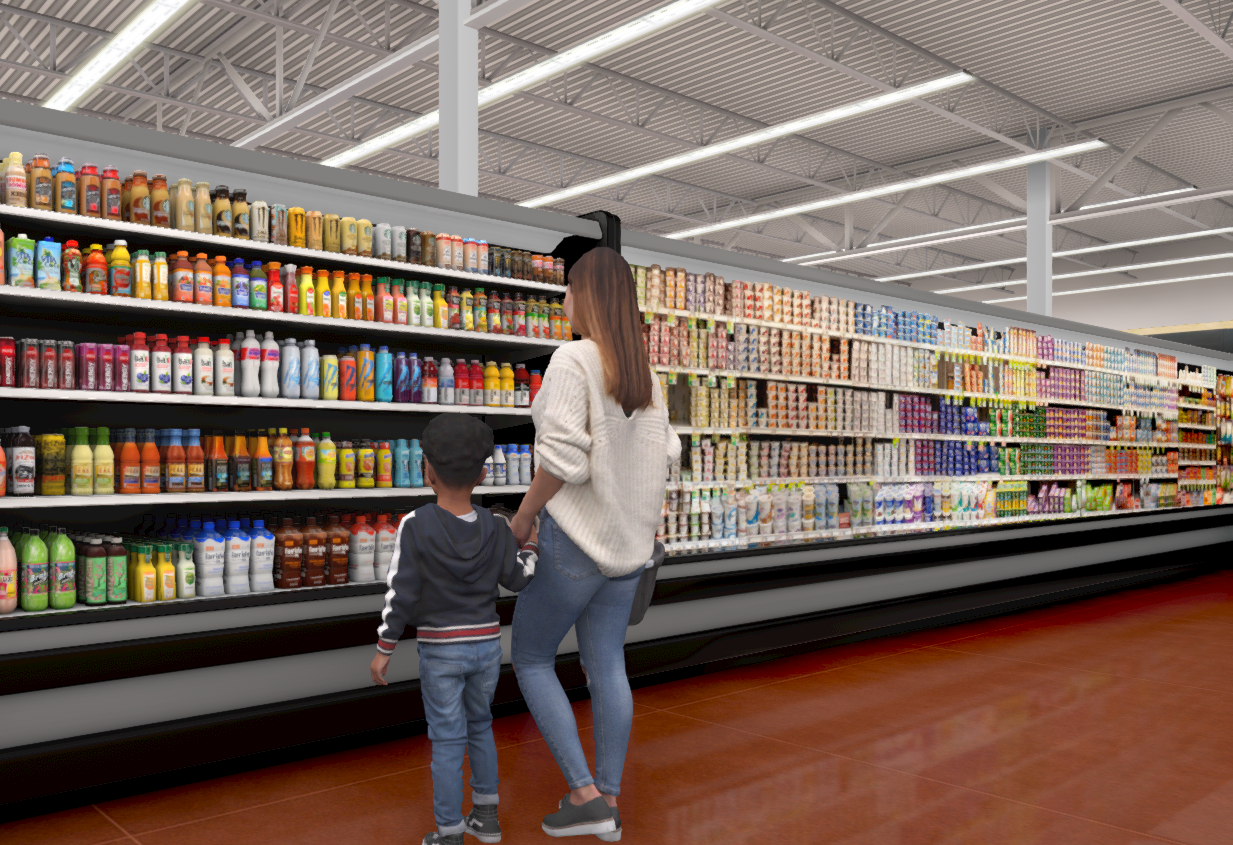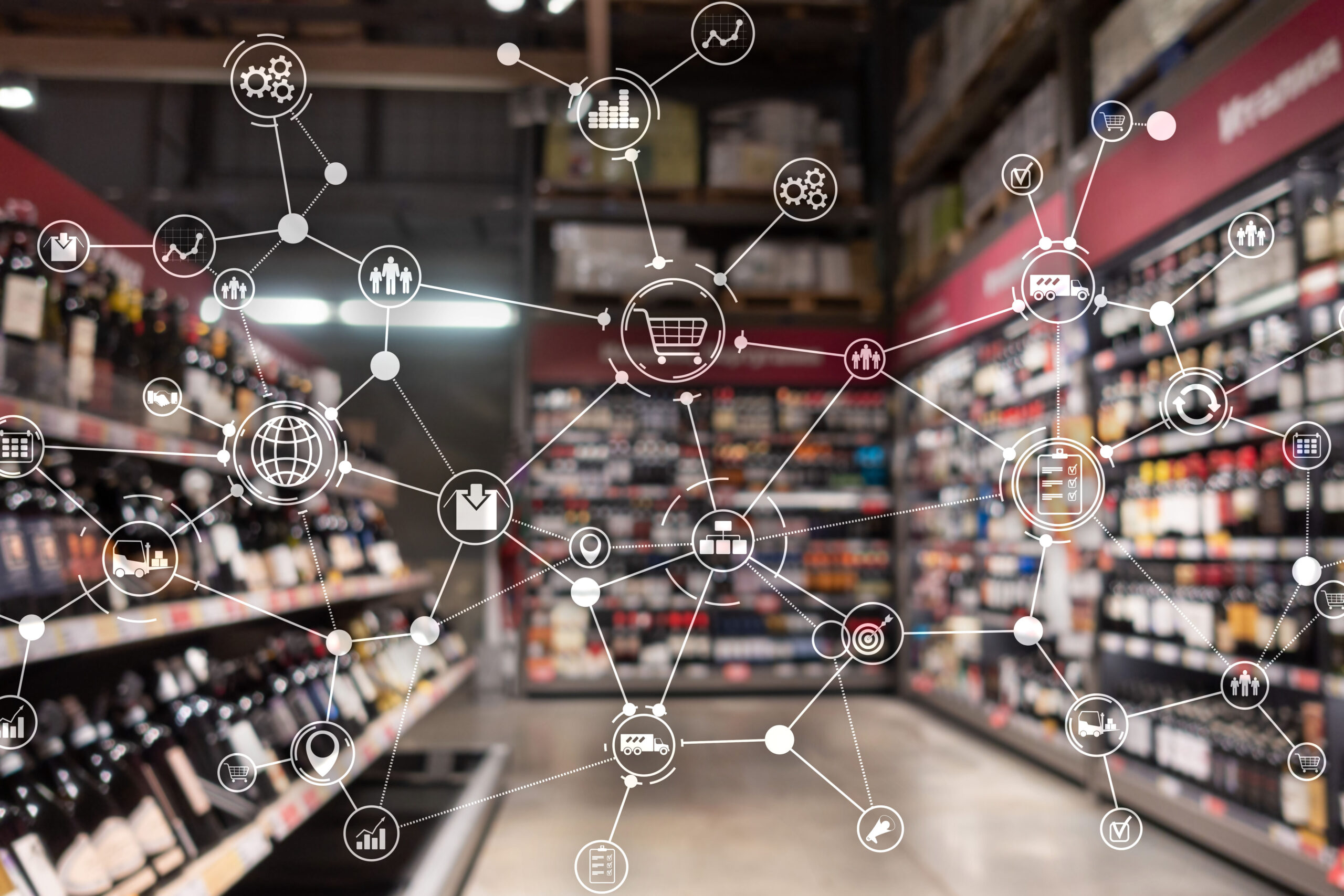In the expanding realm of virtual reality, even the mundane task of grocery shopping is getting a futuristic makeover. VR supermarket games are a fascinating intersection of technology and consumerism, redefining how we approach shopping. With giants like Meta (formerly Facebook) investing heavily in developing virtual reality platforms like Oculus Meta Quest, the potential of VR supermarket games becomes all the more compelling.
At its core, VR supermarket shopping games harness the immersive capabilities of VR technology to create a shopping experience like no other. Take, for example, the popular game Supermarket, where you can step into a virtual world of incredible visuals where different supermarkets are stocked with pixel-perfect representations of products.
As the customer, you navigate through the aisles just as you would in a physical store. With VR headsets and controllers, users can reach out, pick up items, inspect them closely, and even place them in a virtual cart. The experience is a seamless blend of entertainment and shopping, blurring the lines between the digital and physical worlds.
What sets supermarket VR experiences like this apart is their ability to make shopping an engaging and enjoyable endeavor. By merging the interactivity of gaming with the practicality of shopping, these games offer a unique way to explore products and make purchasing decisions. So whether you’re 8 or 80, this fusion of entertainment and retail provides a novel shopping avenue and normalizes the idea of virtual shopping. As technology continues to advance, VR supermarket games hold the potential to shape the future of retail, offering consumers a convenient and immersive way to engage with products and brands.
The impact of VR supermarket games on shopping trends
VR supermarket games are impacting shopping in a big way. Virtual reality shopping may initially appear as a daunting and unfamiliar concept to buyers, often accompanied by concerns of complexity and risk. However, the emergence of no-risk VR games plays a pivotal role in reshaping these perceptions. By immersing users in a simulated shopping environment that mirrors the real-world experience, these games offer a safe and comfortable space for individuals to engage with VR technology. This familiarization process is invaluable in normalizing the idea of VR shopping. It allows users to witness firsthand how easy and intuitive it can be to navigate virtual store shelves, select products, and complete transactions.
These no-risk VR games bridge skepticism and adoption, fostering a sense of comfort that gradually erases the initial concerns associated with virtual shopping. The captivating nature of VR, enhanced by these immersive games, captures users’ attention and imagination, igniting a curiosity for the possibilities of VR shopping. As users become more accustomed to exploring and interacting with products in a virtual space within a game, they are more likely to consider and embrace the concept for their real-world needs. This gradual shift from virtual exploration in a game to actual virtual shopping redefines the shopping experience entirely, introducing convenience, customization, and interactivity as critical elements of the modern retail journey.
It allows them to see firsthand the benefits of VR shopping, which include:
Convenience and accessibility
One of the most significant benefits of VR shopping is its unparalleled convenience and accessibility. Virtual shopping eliminates the need for physical travel, allowing users to explore stores, browse products, and make purchases from the comfort of their own space. The ability to shop from anywhere and anytime breaks down traditional barriers, catering to varying schedules, preferences, and time zones, ultimately making the shopping experience seamlessly adaptable to individual lifestyles.
Variety and customization
Virtual shopping revolutionizes the landscape by offering an expansive array of products that might be impractical to house in physical stores. This broader selection arises from the limitless virtual space available for showcasing products. Additionally, VR shopping introduces a novel level of product personalization – users can tailor products to their liking, experimenting with different configurations, colors, and features before purchasing, resulting in higher purchasing confidence.
Immersive exploration
One of the standout advantages of VR shopping lies in its ability to replicate the traditional “try before you buy” experience. Users can interact with virtual products in a lifelike environment, grasping their size, shape, and texture through intuitive interactions. The technology enables customers to inspect products from every angle, enhancing their confidence in making informed decisions. The sophisticated realism of VR simulations ensures that users can accurately gauge essential attributes of the products, fostering a tangible connection with items they’re interested in purchasing.
Personalized recommendations
VR shopping introduces a new era of shopping personalization by applying AI-driven algorithms. By analyzing user preferences and behaviors, these algorithms curate tailored product recommendations that align with individual tastes and needs. This tailored approach enhances the shopping experience and introduces users to new products they might not have discovered otherwise. The result is a shopping journey that is convenient and delightfully customized, ensuring that each user finds products that resonate with their unique style and preferences.
Reduced pressure and impulse buying
One of the significant advantages of VR shopping is its ability to eliminate the pressure often associated with in-store sales tactics. Users can explore products at their own pace, free from the influence of pushy salespeople. This environment promotes more deliberate and informed purchasing decisions, allowing users to thoroughly assess products before making a choice. As a result, the virtual shopping experience encourages confident buying, reducing the likelihood of impulse purchases that could lead to returns. This benefits the consumers and contributes to a more efficient and satisfying retail process, resulting in a smoother checkout, higher sale conversions, and even longer future wishlists for returning customers.
Enhanced engagement and interaction
VR shopping offers an unparalleled level of interactivity that transforms the traditional retail experience. Users can interact with products in immersive ways, such as manipulating them, trying them on virtually, and even experiencing their functionality. Incorporating gamification elements further enhances engagement, making the shopping experience enjoyable and entertaining. Brands can leverage this potential to create unique and memorable customer interactions, fostering brand loyalty and a deeper connection between consumers and their products. This dynamic and interactive nature of VR shopping provides an innovative way for retailers to differentiate themselves in a competitive market.
Sustainability and eco-friendly shopping
VR shopping presents a promising avenue for environmentally conscious consumer choices. One of its significant advantages is the reduction of the carbon footprint traditionally associated with physical retail, as it eliminates the need for travel and minimizes energy consumption in brick-and-mortar stores. Moreover, virtual shopping can decrease packaging waste, as products are digitally showcased and don’t require physical packaging for display. This aligns with the growing trend of eco-friendly shopping and resonates with consumers who prioritize sustainability in their purchasing decisions. As the world continues to emphasize environmental responsibility, VR shopping offers a forward-looking approach supporting consumer preferences and a more sustainable future.
The Future of retail with InContext
Integrating VR technology into the retail landscape holds immense potential for shaping the future shopping experience. Predictions point towards a significant growth trajectory for VR in retail, where immersive and interactive elements become seamlessly integrated into consumers’ shopping routines. VR supermarket games will likely coexist with traditional shopping, offering consumers a choice between physical visits and virtual explorations. This dual approach recognizes the diverse preferences of consumers, allowing them to switch between the convenience of VR and the tactile experience of in-store shopping.
As this evolution unfolds, partnerships between tech companies and retailers are poised to play a pivotal role. Collaborations can create cutting-edge VR platforms that cater to retailers’ unique needs while harnessing VR technology’s capabilities to enhance customer engagement. Such partnerships could lead to innovative solutions that blend online and offline shopping, offering seamless transitions between the digital and physical realms. At InContext, we do just that.
Our pioneering approach to shopper understanding revolutionizes how brands and retailers gain insights into today’s dynamic consumer landscape. The traditional tools for comprehending shopper behavior often fall short, as purchase intent doesn’t always align with actual actions, and relying solely on historical data provides an incomplete view.
At InContext, we leverage the power of VR shopping gamification to bridge this gap. By immersing shoppers in an online digital shopping simulation, their attitudes seamlessly merge with observed behaviors, offering profound insights that accurately predict in-store outcomes. The expertise of InContext’s industry-savvy professionals enhances this process, providing invaluable guidance. This innovative virtual research methodology boasts diverse study designs, a wealth of norms and benchmarks, and integration with the immersive ShopperMX platform for visualization, ensuring a comprehensive and scalable in-store planning strategy. In addition, we also leverage Augmented Reality (AR) as a transformative tool, bridging the gap for store managers by overlaying proposed layouts directly onto their physical environments. This innovation enables store managers to visualize and fine-tune future store arrangements with enhanced precision and efficiency.
This transformative approach captivates your audience and empowers them to make more informed purchasing decisions. Our expertise in leveraging VR can reshape the customer journey, allowing you to create a lasting impact and establish a solid competitive edge in today’s dynamic market.





